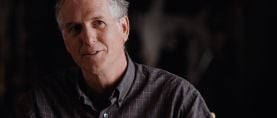
In Memoriam: Miroslav Ondricek, ASC, ACK (1934-2015)
Remembering the Czech cinematographer who earned Academy Award nominations for his work on Ragtime and Amadeus.

Czech cinematographer Miroslav Ondricek, ASC, ACK, who received Academy Award nominations for his work on Ragtime and Amadeus, died on March 28 in the Czech Republic at the age of 80.
Born in Prague in 1934, Ondricek was 4 years old when he saw his first movie.He was so captivated he tiptoed behind the screen “to find out how these pictures were made,” he told American Cinematographer (March ’04). As he grew up, he spent many hours watching movies from America and other Western countries, and after graduating from high school, he landed an apprenticeship in the laboratory at Barrandov Studios.
He worked at Barrandov for several years, eventually moving up to assistant on documentary crews and then features. Between projects, he attended FAMU, the Prague Film School. “The most important aspect of my development at that point was the opportunity I had to assist the great cinematographers of that era: Jaroslav Tuzar, Jan Curik and Jaroslav Kucera,” Ondricek told AC. "These men were the pillars of cinematography."
In 1957, Ondricek was chosen by Barrandov to join a small group of filmmakers who would further their studies in night school. The other participants included Milos Forman, Jan Nemec and Ivan Passer, whose subsequent collaborations with Ondricek would help to define the Czech New Wave. These films included Intimate Lighting, Loves of a Blonde and The Firemen’s Ball.
When the Soviet Union invaded Czechoslovakia in 1968, Ondricek moved to England, where he made three films with director Lindsay Anderson: The White Bus, If … and O Lucky Man! In 1970, he joined Forman in New York to film Taking Off, and then George Roy Hill came calling about Slaughterhouse-Five. “I never felt I had to change my ways to make films in America,” Ondricek told AC. “A person can have the American feel even if he or she is born in Warsaw or Moscow or Prague. It has to do with the way you think, the way you express freedom in how you approach life; it’s a combination of this and the willingness to work hard. That's what I appreciate and love about America.”
Ondricek's collaborations with Forman included three acclaimed period pieces: Hair, Ragtime and Amadeus. Upon receiving word of his Oscar nomination for Ragtime, Ondricek “was amazed,” he told AC. “I just couldn’t believe all those American cinematographers had looked at my film and picked me as one of the nominees when there were so many wonderful cinematographers in the United States.”

In an interview with Vincent LoBrutto for the book Principal Photography (1999), Ondricek revealed, “On most of my pictures, I only use two lenses. On Ragtime, I used a 55mm and an 85mm for the whole movie. On The Firemen’s Ball, I only used a 75mm and a 25mm. On Hair, I used a Panavision zoom because of the music and dancing.”
Amadeus brought Forman and Ondricek back to Prague for an almost entirely location-based shoot. Just four sets were built for the production, and it took months of negotiation with the Czech government to secure one of the most important locations, the all-wood Tyl Theater, which Ondricek wanted to light mainly with candles. In an April ’85 interview with AC about the project, Ondricek noted that his crew had to build a massive metal scaffold that extended into the theater through the dome in the roof in order to support 11 700-pound chandeliers, each burning 40-60 candles. The fear of fire was so great that firemen were stationed every 15' throughout the theater to watch the candles. “We were trying to create an atmosphere of soft candlelight all over and all the time,” Ondricek said. Shooting on Eastman Kodak 5293, he augmented the firelight practicals with 250-watt Chinese lanterns. When different-colored light was necessary, he used spray-painted bulbs instead of gels.

Ondricek's other features included The World According to Garp, Silkwood, F/X, Valmont and Distant Harmony. He became an ASC member in 1996, after being proposed for membership by John Bailey, George Koblasa and Vilmos Zsigmond.
Late in his career, he teamed with director Penny Marshall on four features, Awakenings, A League of Their Own, The Preacher’s Wife and Riding in Cars with Boys. “Penny has a strong understanding of dialogue, and she recognizes immediately any kind of false tone,” he told AC. “She is an excellent listener, and that makes her unusual.” Marshall presented Ondricek with the ASC International Award in 2004.
“I’ve always felt that the most important thing is the story, and my only job is to help tell it,” Ondricek observed. “You have to look at a movie the way audiences do and see it as they do. It can be technically perfect and artistic, but if the audience doesn't respond to the emotions, then the film doesn’t work.”







